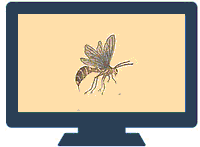Entomology, Department of

Department of Entomology: Distance Master of Science Projects
Date of this Version
Spring 2017
Document Type
Project
Citation
University of Nebraska-Lincoln Department of Entomology Online Masters Program Final Project. Lincoln, Nebraska.
Abstract
The insect fauna of Camp Arifjan, Kuwait was sampled to determine species richness and how it was impacted by human development and activities. Insects were sampled at twelve sites representing three each of work, public use, residential and vacant brownfield areas. Sampling was conducted using net, sticky trap and pit traps for 60 days. Sticky traps were discarded as unworkable. The first of each species captured from each site was retained as a voucher specimen. Specimens were determined to lowest level possible using a dissecting microscope, available literature and the internet. Collecting and trapping obtained 355 specimens representing 170 species. 170/492 species is 34.56% of known insect species diversity in Kuwait. Insect species richness was tied to plant community richness which was in turn driven by soil and water conditions. Most sites had small “drainpipe oases” of ephemeral annual plant communities concentrated around drainpipes and runoff. Only sites 4, 5 and 6 retained any perennial native plants. Work areas had fewest plants and fewest insect species. Due to time and operational restrictions no off-post control areas were surveyed and the survey was of limited duration. A yearlong study including wild off-post areas would provide a better evaluation and baseline for future diversity studies and environmental programs.


Comments
Copyright 2017 Ronald Hirzel